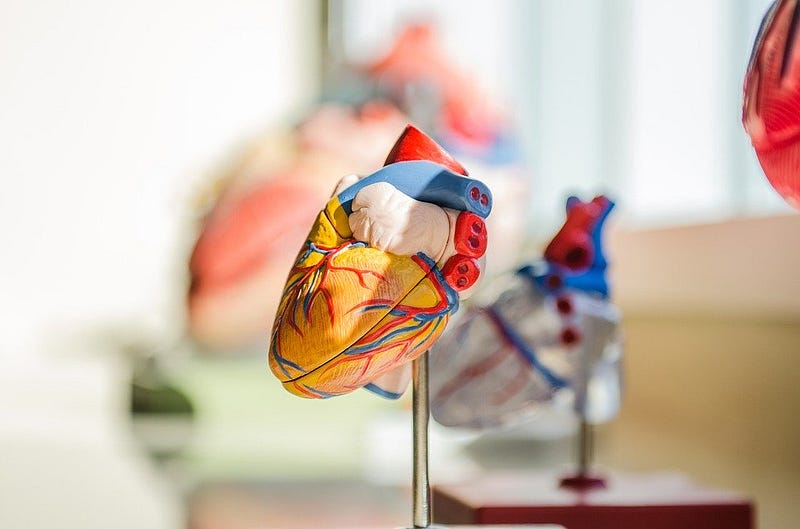Finding the Elusive Braveheart RNA Structure
Catrin Zharyy, Behavioral Neuroscience, 2023

If there’s anything genetics can teach us, it’s that we are the sum of our parts. Sure, you can style your hair or do some jumping jacks, but there is only so much about your appearance and health that you can control. For better or for worse, you are the result of an immeasurable amount of microscopic molecular interactions. So if biologists, researchers, and healthcare professionals have any hope of understanding the human body, must they crawl around inside our cells with flashlights strapped to their heads to figure out what exactly is going on in there? In short, no. Instead scientists are continuously coming up with new experimental methods and technologies to try and map every stage of human development, from how an embryo becomes a crying machine to what our cells do in old age.
In the past seven years, a particular string of RNA — which is similar to DNA except that it’s single-stranded and much less stable — has come under close inspection for its potential role in the development of the cardiovascular system. Our genome is packed tightly into chromosomes in the form of deoxyribonucleic acid (DNA). Replace that “D” with an “R” and you get ribonucleic acid (RNA), best known for being the product of transcription wherein one strand of DNA is used as a template for single-stranded messenger RNA (mRNA). In turn, it can then be used as a template for protein assembly. Proteins are responsible for many, many functions within an organism, but only one to two percent of the mammalian genome codes for proteins. And it doesn’t stop there: most of the human genome is transcribed into RNA. So what does all the other RNA that doesn’t code for proteins do?
This approximately 590-nucleotide-long lncRNA is essential to the activation of a gene regulatory network involved in the differentiation of heart cells from stem cells.
There are some types of non-protein-coding RNA whose function we understand pretty well; they either aid in translation (making proteins from mRNA) or regulation of gene expression. The least understood class of RNA sequences is called long non-coding RNA (lncRNA). In 2013, Klattenhoff et al. identified a particular lncRNA on the 18th chromosome of mice that was expressed in heart tissue more than any other tissue examined; they dubbed it “Braveheart” — or Bvht in shorthand. Through further analysis, they discovered that this approximately 590-nucleotide-long lncRNA is essential to the activation of a gene regulatory network involved in the differentiation of heart cells from stem cells. Disruption of this network leads to congenital heart disease. Suffice it to say, this was a huge advancement in the search for the function of lncRNAs and the study of the development of the cardiovascular system.
Three years later, another group of researchers determined the secondary structure of Bvht by examining the base-pair interactions between sections of the molecule that cause loops, folds, and bulges in its conformation- these geometries are essential to determining the RNA’s function. One of the loops identified was an “asymmetric G-rich internal loop” (AGIL), whose function was pinpointed by cutting it out of the mouse genome using CRISPR-Cas9. Their experiment revealed that AGIL is necessary for binding to cellular nucleic acid binding protein (CNBP), which is a regulatory protein key for the differentiation of cardiomyocytes — the cells that make up cardiac muscle.
This was a huge advancement in the search for the function of lncRNAs and the study of the development of the cardiovascular system.
The most recent development in the Braveheart saga happened in January 2020 at the Los Alamos National Laboratory in New Mexico, where for the first time, scientists mapped the 3D structures of the Braveheart molecule as well as the Bvht-CNBP complex. They used small angle X-ray scattering (SAXS), machine learning, and high performance computing to develop atomistic models, which elucidate the behavior of complex systems by considering its smallest pieces.
This finding, along with all the other research conducted on Braveheart, has incredible significance for the fields of genetics and medicine. It has laid the groundwork for future structural studies of lncRNA, explorations into lncRNA binding activity, and using Bvht to derive cardiomyocytes in vitro. Unfortunately, although cardiovascular disease is one of the most common causes of death, mammals’ hearts do not easily regenerate tissue. If creating heart tissue in the lab were possible with the help of Braveheart, that could open the door to regenerative and transplantation therapy for those with cardiac disorders. The way things are going, enriched scientific minds and healthy hearts await us on the horizon.
Genome Biology (2004). DOI: 10.1186/gb-2004–5–4–105
Cell (2013). DOI: 10.1016/j.cell.2013.01.003
Molecular Cell (2016). DOI: 10.1016/j.molcel.2016.08.010
Nature (2020). DOI: 10.1038/s41467–019–13942–4
